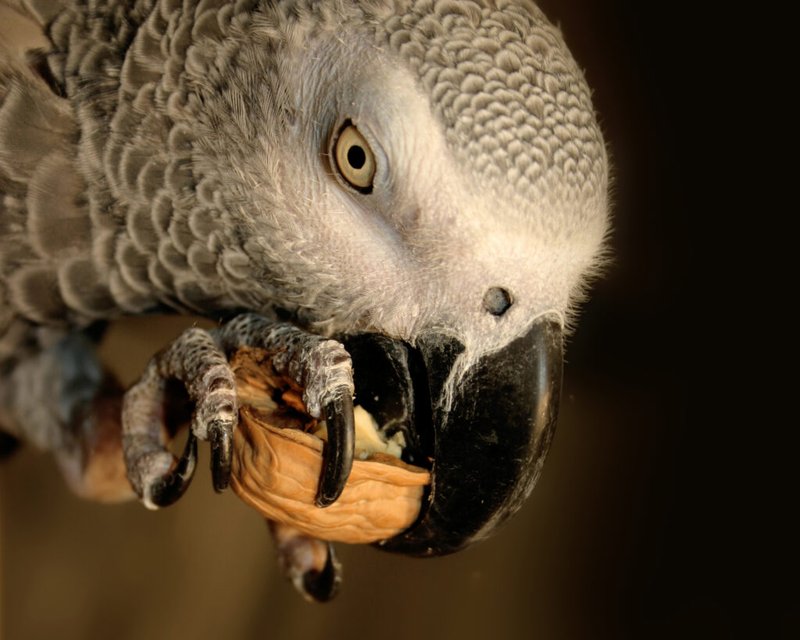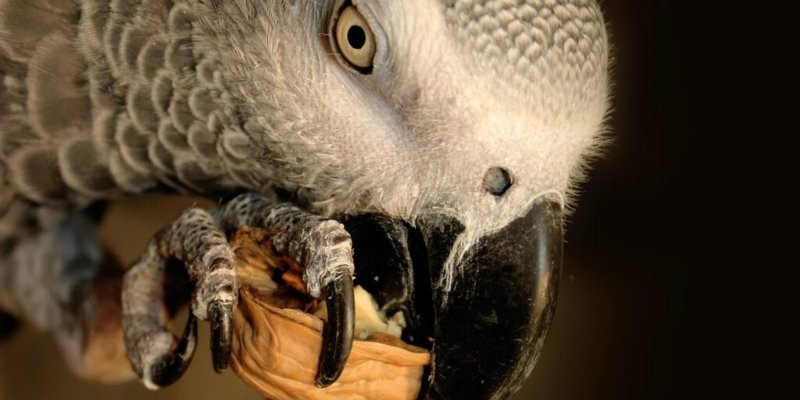
These birds predominantly hail from the rainforests of West and Central Africa, where food sources are abundant but also require a keen sense of exploration. They’re not just fliers; they’re hunters and gatherers! With their strong beaks and dexterous feet, they’ve mastered the art of foraging, turning the search for food into an adventure. In this article, we’ll explore everything from what these feathered friends munch on to how they skillfully forage for their meals.
What Do African Grey Parrots Eat?
Understanding the diet of the African Grey Parrot is crucial for both their health and well-being. In the wild, their meals often consist of a diverse range of foods. These birds are herbivores, which means they primarily eat plant-based foods. Let’s take a closer look at what’s on their menu.
- Fruits: African Grey Parrots love fruits like apples, bananas, and berries. These items are not just yummy treats; they also provide vital vitamins and nutrients.
- Nuts and Seeds: They often snack on various nuts and seeds, which offer healthy fats and proteins. Think of it as their version of a power snack!
- Vegetables: Dark leafy greens, carrots, and bell peppers make frequent appearances in their diet. These veggies are packed with the nutrients they need to stay vibrant and active.
- Flowers: Yes, you heard that right! African Grey Parrots sometimes nibble on flowers, adding not just variety but also fun flavors to their diet.
This combination makes for a well-rounded diet, which is essential for their vibrant plumage and lively personalities. Unfortunately, the commercial diets available for pet birds often fall short. It’s important to offer a mix of fresh foods for your African Grey if you have one at home.
How Do They Forage in the Wild?
You might be wondering how these parrots manage to find their food in the vast jungles of Africa. It’s not just a matter of luck; it involves a clever mix of intelligence and instinct. Foraging is almost an art form for these birds, and they use a few effective strategies to hunt for their meals.
First off, African Grey Parrots often use their excellent vision to spot ripe fruits and seeds high in the trees. They can see colors more vividly than humans, so they can easily distinguish between ripe and unripe offerings. Imagine them soaring through the canopy, their keen eyes scanning the surroundings for the juiciest options!
Plus, they’re not afraid to play the scavenger. If one parrot finds a food source, expect others to join in. It’s a way of sharing and makes foraging more efficient. This social behavior helps them find and access food that might otherwise be out of reach.
Lastly, their strong beaks are perfect for cracking open hard nuts and seeds. It’s like having the best kitchen tools at their disposal! They can expertly peel away the outer shells to get to the nutritious goodies inside. Honestly, it’s impressive to watch them work!
The Role of Social Behavior in Foraging
Social dynamics play a massive role in how African Grey Parrots forage. These birds are not solo diners; they thrive in the company of others. You might be curious about how their social behavior contributes to their foraging success.
One major aspect is the practice of banding together. When foraging in groups, they can communicate and alert each other to potential food sources. Picture a little team of parrots; one spots a tasty treat and starts calling out to others. Soon enough, they all swoop in to share the bounty. This communal effort not only increases their chances of finding food but also makes foraging a more enjoyable experience.
Additionally, younger parrots learn from their elders about where to find food. This imitation learning is crucial, especially for the younger generation. They watch and mimic the older birds, picking up essential skills to navigate their environment. It’s kind of like how kids learn from their parents, but with a lot more flapping and chirping!
On top of that, African Grey Parrots employ clever tactics to steal food from each other. It’s a bit cheeky, but it showcases their intelligence and adaptability. They can sometimes distract a fellow bird to snatch a seed or a fruit—sly little creatures!
Seasonal Variations in Their Diet
Just like us, African Grey Parrots adapt their diets based on what’s available throughout the year. If you think about it, nature runs on a schedule, and these birds are no exception. Let’s explore how seasonal changes impact their foraging habits and what they eat.
During the rainy season, when fruits and seeds are plentiful, African Greys indulge in a feast. They take full advantage of the rich food supply, gorging on whatever is ripe and ready. This is when you’ll see them thriving, with shiny feathers and energetic personalities. You might even picture them swinging from branch to branch, happily munching on all kinds of goodies.
As the dry season sets in, food becomes scarcer. In response, these parrots display their resourcefulness. They transition to a diet that focuses more on nuts, seeds, and hardier plants that can withstand the lack of rain. Some parrots even forage further from their usual areas, displaying their adaptability. This kind of behavior shows just how clever and resilient they truly are.
You might be wondering, why does this matter? Understanding these seasonal changes can help bird enthusiasts and pet owners create a balanced diet for their feathered friends at home. Providing a variety of fresh foods that mimic seasonal offerings can keep pet African Greys happy and healthy.
Potential Dietary Issues and Considerations
While African Grey Parrots have a diverse diet in the wild, pet birds can face some challenges that might affect their health. It’s important to be aware of these issues to ensure your parrot thrives. Let’s talk about what you should keep in mind when feeding your parrot.
First, many commercial bird diets on the market aren’t nutritionally complete. Relying solely on pellets or seed mixes can lead to deficiencies in vitamins and minerals. For example, a diet high in seeds but low in fresh fruits and vegetables can lead to issues like obesity or even feather plucking. That’s why offering a variety of foods is essential!
Additionally, African Grey Parrots are prone to certain health issues, such as liver disease and obesity. This means you should monitor their overall intake closely. Offering treats is fine, but moderation is key. Think of it like giving sweets to a child; a little is great, but too many can lead to problems!
Lastly, always remember that fresh water is just as important as food. Make sure your parrot has access to clean water daily, as hydration is vital for their overall health.
The African Grey Parrot is not just a beautiful pet. Their eating and foraging habits reflect their intelligence, adaptability, and social behavior. From their varied diet of fruits, vegetables, nuts, and seeds to the intricate foraging techniques they use in the wild, these birds have truly mastered the art of survival. Whether you’re a parrot owner or simply fascinated by these feathered friends, understanding what the African Grey eats and how it hunts or forages offers a glimpse into their vibrant lives.
Next time you observe an African Grey—either in the wild or at home—take a moment to appreciate the clever ways they seek out their food. By mimicking their natural diet and foraging behaviors, pet owners can ensure their parrots remain happy and healthy, reflecting the lively spirit we all love about these amazing birds.

